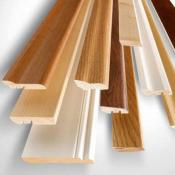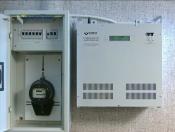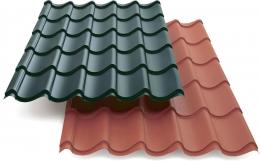Search
Login
Types of metal tiles used in construction, choose a metal tile - how, for what, what?
What is the construction of most know firsthand. The selection of high-quality materials plays an important role at any construction site. Crowns the whole process of roofing. And the lines of operation of your building will directly depend on the quality and reliability of the roof installation. The choice of roofing material and its installation is the final touch, completing the main stage of construction.
Table of contents
- The choice of roofing material
- Types of metal tile coatings
- Classification of metal tile profiles video
- Which metal tile to choose?
- How to save money when choosing a metal tile? video
The choice of roofing material
Many private developers face a dilemma: which roofing material to choose? The variety of roofing materials is very large. But for each roof there is a material.
When choosing a roofing material, you should consider:
- the weight of the roofing cake;
- roof dimensions;
- structural features of the roof;
- durability of the structure;
- the price of roofing materials;
- guarantee for roofing material.
Basic roofing materials:
- non-ferrous metals (aluminum, copper, titanium-zinc);
- bituminous (euroroofing material, shingles, odulin);
- steel (corrugated board, metal tile);
- cement-sand (tile, slate)
- ceramic (tile, tile-carp);
- natural (roofing slate, straw, reeds, shingles);
- polymer (polycarbonate, PVC plates, polymer sand tiles).
Among these materials, the golden mean is price and quality; roofing materials made on the basis of a steel sheet with an external polymer coating occupy a golden mean.

This material has a large margin of safety, warranty operation lines 10-15 years, the actual more than 50 years. It has an excellent appearance, easy to install, has a small weight. It also allows to reduce the weight of the truss structure, the load on the walls and the foundation of the structure.
Types of metal tile coatings
Sheets of metal are produced by cold stamping. For the production of sheets using galvanized steel with a thickness of 0.4-0.5 mm. The strength characteristics of the sheet depend on the thickness of the steel. When choosing sheets, you must pay attention to the following points:
The amount of zinc per 1m2. For galvanized steel, GOST 14918 - 80 applies, according to which three types of zinc coating are distinguished. Coating thickness 40-60 microns, when using 570-855g / m2. Sheets with such a coating are not supplied to Russia, they can be found very rarely at enterprises that produce domestic steel. Coating 18-40 μm thick, using zinc 258-570g / m2. This is the main material for the production of sheets for metal and corrugated board. It has the largest scope. To reduce the cost of sheets and save material, with deterioration of the quality of the sheet, they also use a coating with a thickness of 10-18 μm, where 142-258 g / m2 of zinc is used.
After this, the sheets give in to passivation, for the transition of the metal into an inactive state. Passivation reduces the activity of zinc, and it practically does not corrode. After that, the sheets are primed and a finishing polymer coating is applied with a thickness of 25-200 microns. To protect the polymer coating, the sheets are varnished. The color of the coating of each manufacturer must comply with RAL.

In the production of using several options for polymer coatings that can work in different conditions.
Polyester the cheapest and most common coverage. Available in glossy and matte finish. The thickness of the glossy coating is 25 microns, matte 35 microns. Warranty lines for such coverage generally do not exceed 10-15 years. When working with sheets of this coating, you need to be careful it is very easily mechanically damaged.
Plastisol coating based on polyvinyl chloride and various plasticizers, thickness 100 and 200 microns. Designed for harsh environments. Of steel coated with plastisol, drainage systems and additional elements of roofing systems are often made.
Pural polyurethane based material. Coating thickness 50mkm. It has great resistance to the UV spectrum, and chemical resistance. Manufacturer's warranty for 15 years. Rautauruukki has developed a new coating for this Purex line. The strength characteristics of the coating, ductility, and corrosion resistance are increased.
PVDF // PVDF2 coating based on polyvinyl fluoride and acrylic (80% PVF and 20% acrylic). Coating thickness 27microns. It has the highest hardness among applied coatings and excellent ductility.

Prism material of the English company Corus. The basis of the coating is not galvanized steel sheet, but a steel sheet coated with an alloy of Galvallouy zinc (95%) and aluminum (5%), the coating thickness is 50 μm. The outer layer is a polymer paint with polyamide granules. Warranty lines are 15 years. It has good corrosion properties.
Aluzinc coating for a steel sheet based on zinc (43.4%), aluminum (55%) and silicon (1.6%). Aluminum with oxygen from the environment creates an oxide that further protects the coating itself from corrosion. Such a coating does not darken with time and the operation lines are longer than galvanized sheets 5-7 times.
Classification of metal tile profiles
Choosing a metal tile profile is also very important. Indeed, the stiffness of the sheet will also depend on the height of the wave. For roofs with a slight slope or in conditions with a large snow cover, the profile height plays an important role. There are recommended standards for profile heights, but they may vary from manufacturer to manufacturer.
The main profiles of metal:
- Andalusia modular metal tile, has an S-shaped profile with a wave height of 45mm. It is equipped with a Z-shaped lock for sheet connection and hidden fastening to the crate, which ensures high reliability of the coating.

- Adamante new roofing material from Ruukki. Two new colors Eggplant velvet and Red wine were specially developed for this profile.

- Finnera modular metal tile, usable size 1140x660mm, full 1190x705mm. New wave geometry with a profile height of 52 mm, which ensures maximum sheet rigidity in all weather conditions.

- Decorrey lightweight, easy to install with a small wave of 28mm metal.

- Monterrey (Monterrey) metal tile with an S-like profile, wave height 39mm. It imitates classic tiles very well.

- Modern one of the varieties of the Monterrey profile. It features a trapezoidal shape and a lower wave height of 23mm.

- Cascade U-shaped material with a wave height of 45mm. It has great rigidity, it is used for roofs of varying complexity.

- Joker classic smooth S-like wave, profile height 34mm.

- Banga metal tile with the largest wave height of 66 mm, a rounded ridge shape and a flat sole are clearly and clearly expressed. Withstands heavy snow loads.

- Shanghai a variation of the profile of the bang, has the same waveform, but with a lower height of 30mm.

When choosing a metal tile profile, remember that the roof will be one of the main elements of the exterior of your cottage or home.
Which metal tile to choose?
Approaching the final stage of construction, a careful owner must determine the type of roof and the choice of material for it. When choosing a metal tile, it should be noted that manufacturers do not recommend installing this material for roofs whose angle of inclination is less than 14. Also, when choosing a metal tile, it is necessary to take into account the structural features of the roofing cake.
An important role in the installation of the roof is played by the fastening and overlap of the sheet. Choosing modular sheets of metal (Andalusia, Adamante, Finnera) we get a hidden fastening of sheets. This will protect the roof from leaking through poor sealing of the attachment points. But for long slopes, we get a material consumption of 5-15% higher.
For simple structures, it is recommended to calculate the sheet of metal so that it overlaps the ramp from the overhang to the ridge. Manufacturers supply sheets with a length of up to 8 m.p., which is quite enough for private construction, and leads to a reduction in the cost of material for overlapping. At the same time, in the places where the metal tiles are fixed with screws, sheet damage occurs. At the same time, a washer with a sealant is on the self-tapping screw, the lines of service of the seal are lower than the metal itself. A sealant of a poor quality manufacturer will become brittle in 1-2 years, of a branded one - it will last longer than 10-15 years, due to vulcanization of the washer seal.
Design diversity in the form of a profile will allow you to choose a sheet that fits perfectly into the exterior.
How to save money when choosing a metal tile?
It would seem that the answer is simple on the roof can not be saved! But this is far from the case. Manufacturers produce metal tiles on several bases of galvanized sheet with a thickness of 0.4 mm, 0.45 mm and 0.5 mm. This is where you can save. If you have a small house or a cottage, a summer residence, a garage or other structure with a roof slope of 30 or more and you will walk on this roof once in your life, the snow cover is small, then you can safely take a sheet 0.4 mm thick. This will save up to 15% of the money. But if the roof area is large over 120-150 m2 per slope with a small angle of inclination, in this case you can save on the thickness of the metal, but not desirable.
When buying metal, it should be noted that there are unscrupulous suppliers who can sell sheets of 0.45 mm thickness at a price of 0.5 mm, and 0.4 mm at a price of 0.45 mm. It is impossible to determine the thickness of the metal by eye. Therefore, all products must be certified and have appropriate quality certificates. You can also arm yourself with a micrometer and check each purchased sheet.





